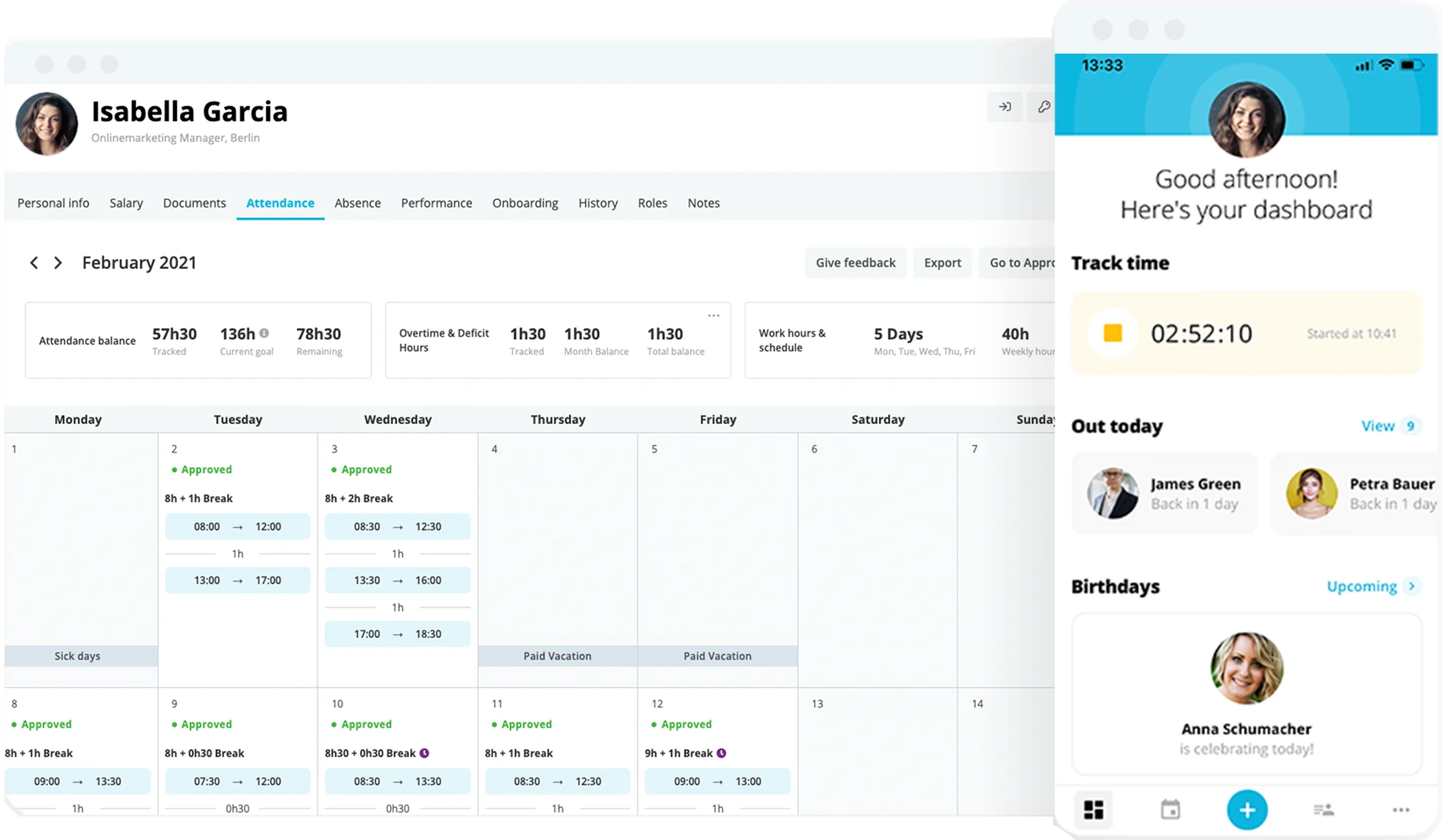Home Office Policy: What Are Some ‘Work From Home’ Rules?

What work from home rules get the most of your employees? Working from home is the new normal for so many workers, and it figures to be a centerpiece of our lives after the pandemic. In this article, we break down everything you need to know about working from home policies, regulations, and helping your employees make the most of it.
Flexible working arrangements can boost your employer brand. Read our eBook for more.What Is Working From Home?
The concept of working from home plays into a flexible mode of work, where an employee can work from their residence. Home, here, is a bit of a relative concept — as it may not always be an employee's primary residence. It could be at a family member’s home, a residence in another location, or generally, anywhere that is not specifically an office.
Also known as ‘telecommuting,’ working from home can take three unique forms worth mentioning:
Full-time – An employee works exclusively from home.
Alternating/Hybrid – An employee works both at their workplace and from home.
Mobile – An employee works on the road as part of travel activities
Working from home, in this sense, describes an overarching organizational approach to making work more flexible.
Here’s our guide to flexible working in the UK (and how to arrange it).
Working From Home Pros and Cons
As is the case with most things in life, there are working from home pros and cons to consider, too. Working from home has many advantages, but it’s not always perfect. Below, we detail some of the most common advantages and disadvantages that are worth keeping in mind for your organization…
Working From Home Pros | Working From Home Cons |
|---|---|
Time saved by not having to travel to work | Lack of social interaction with colleagues |
Flexibility in arranging the workday/coordination of (private) appointments | Difficulty in motivating oneself |
Lower costs (employees save commuting costs, employers save office costs) | Productive work only possible with self-discipline |
More productive work in harmony with one's own biorhythm | More difficult flow of information and communication |
Less distraction from colleagues | Blurring of work and private life |
Environmental protection by eliminating the need to travel to work by car (CO2 emissions) | More distraction due to family, children, housework |
Employer branding advantage for companies | Lack of visibility can reduce career opportunities |
Working From Home Rules: Frequently Asked Questions
When it comes to the rules concerning working from home, there are some common questions that we want to address. They are as follows…
Do Employees Have The Right To Work From Home?
In the UK, while workers do not have the express right to work from home, they do have the right to request it. In a case like this, they have the opportunity to request a flexible working arrangement with their employer. In general, flexible working is defined in a whole host of ways, but the government does a great job of summarizing it all.
Who Pays For An Employee To Work From Home?
Does an employee need more ergonomic furniture, perhaps a better internet connection, or something else? The costs for working from home are often not thought of at first, but it is important that there is an agreement in place in terms of who will cover these costs as they arise. In this case, employers may want to consider a working from home allowance.
Can You Deduct Working From Home Expenses On Your Taxes?
Due to Covid-19, the tax implications of working from home have changed a great deal. As per gov.uk, "You may be able to claim tax relief for additional household costs if you have to work at home on a regular basis, either for all or part of the week.” There is more to consider, of course, but this is a good fundamental understanding of the situation.
How Are Breaks Scheduled When Working From Home?
The same way they do as in the office!Employees are entitled to a break of 30 minutes from a working time of six hours. If they work more than nine hours, they are entitled to a 45-minute break.
The employer is responsible for ensuring that these times are observed, but in specific cases, this is difficult to verify. For this reason, employers should return some of the responsibility to employees in their working from home agreement.
What Are Work From Home Rules Concerning Availability?
When working from home, employees may feel the pressure to be “always-on” and constantly accessible by their coworkers should they need anything. That said, employers should work to ensure employees set up a strong work-life balance, and that they work the hours as part of their contract. This way, they remain productive and avoid burnout.
Homeworking & Hybrid Work
The Covid-19 pandemic upended everything we know about the normality of homeworking, making working from home the norm for a great deal of the workplace, for over a year (and then some).
When it comes to considering work from home rules, now, we have a much better idea of what should be included and what needs to be considered.
For that reason, we would recommend reading our hybrid work framework, provided by Personio’s Chief People Officer, Ross Seychell, for you to read today.
What Should A Good Homeworking Policy Include?
For things to be successful, there needs to be some clear work from home rules for your employees. That’s why homeworking requires one thing, above all: clear and unambiguous policy.
Here are some of the most common working from home regulations:
Flat-rate allowance: What is the maximum amount the employer will pay? (Caution: If this is not clearly regulated, the employer theoretically bears all costs for the home office).
Technical equipment: The technical equipment for homeworking must be provided by the employer in accordance with the Workplace Ordinance. In addition, the Occupational Health and Safety Act also applies while working from home!
Supplementary agreement on working hours: Clarify working hours and other points in the employment contract by means of possible supplementary agreements – either in writing or digitally. It is important that the working hours are formulated in such a way that employees and the company benefit from them.
Data protection and cybersecurity: When working from home, employees must be given clear rules on data protection and data security, which are usually identical to those for work in the office.
Accessibility: What are the core working hours when everyone must be available?
Equipment with work tools: What work equipment is provided and how must employees handle it? Is the use of private work equipment permitted?
Right of access: The employer may gain access to the employee’s workplace.
Any of these working from home contract clauses can ensure that your employees know what is expected of them, what is provided by your organization, and all the other relevant details everyone needs to be successful at home.
Our Work From Home Rules & Productivity Tips
It’s not all about work from home rules and regulations, but how your employees can also be their most productive. After all, having a flexible working environment can ensure that people work when it suits them best, and these conditions can often lead to higher productivity and higher revenues, overall.
So, here is what we would recommend to anyone looking to develop the idea work from home experience:
1. Craft The Ideal Workspace
Daylight, regular fresh air, a pleasant room temperature, a desk that is large enough, and a place where one is undisturbed – these are the most important requirements for a good workplace. While it doesn’t sound like rocket science at first, it can make a world of difference for your employees.
2. Establish Routines
People function best when they can stick to fixed routines. That’s why employees should also establish a routine for their home office. Always get up at the same time, make coffee, start work at a fixed time and also finish work at a fixed time. It makes sense to put blockers in your calendar. Example: The first 15 minutes of each working day are reserved for answering e-mails.
3. Always Take Breaks
Breaks boost performance – but they should be chosen sensibly. Everyone should find out which break interval works best. This can be five minutes after every half hour or ten minutes after every hour. The intervals should not be too short, because otherwise, the break will interrupt the concentration phase. If you take a break too late, you’re not doing yourself any good either, because you can only really work with focus over a relatively short period of time.
4. Schedule Periods of Focus
Distraction is one of those things. That’s why we recommend the “Pomodoro Technique,” which helps you make the most of short periods of concentration. This is how it works: 25 minutes of concentrated work, followed by a five-minute break. After four intervals, a break of 20 to 30 minutes is required.
Work From Home Rules: Working From Home Regulations to Consider
HR has a central role to play in the introduction of homeworking. For example, when it comes to defining and agreeing on basic rules for this flexible working model.
Innovative approaches need guidelines. Even more important, though, is the role of HR in the implementation of working from home in everyday working life: Here, HR managers act as mentors, companions, and gatekeepers.
Rule 1: Establish a working from home culture in the company
Work from home rules only stick when people feel empowered to follow them and take advantage of them. That is why HR needs to play an active role in encouraging working from home, especially in a return to more normal times, so that employees can find exactly the right balance that suits them (they should feel free to experiment).
Rule 2: Keep a consistent overview
As we rely on more tools to help us do our work more digitally, this can play a key role when it comes to HR managing employees working from home. This could include a whole host of digital examples, like:
Sick notes – reported by employees themselves via Employee Self Service (ESS)
Certificates – can be uploaded by employees via ESS
Attendances and absences during the workday – can be maintained by employees via status messages in the communication systems, e.g. messenger services
Business Trip Requests – employees submit them via ESS, the supervisor releases the request here as well
Measure 3: Promote collaboration and communication
Managing remote teams is both a science and an art. Employees must be able to communicate transparently and exchange information without disruptions. HR managers need to ensure that the corresponding digital tools help unlock that potential.
Ultimately, it comes down to what solutions you rely on, and how many you rely on. An HR software, properly-suited to your organization, can be the first step. Learn more about how Personio can help today.


